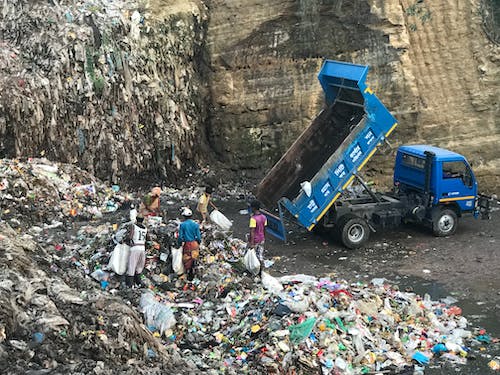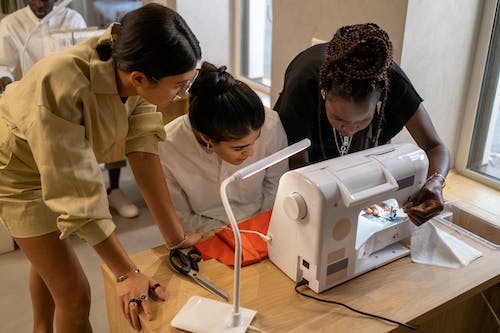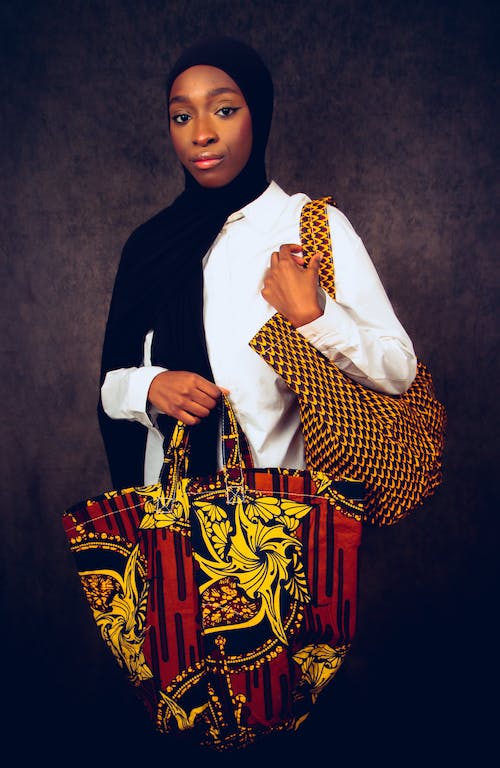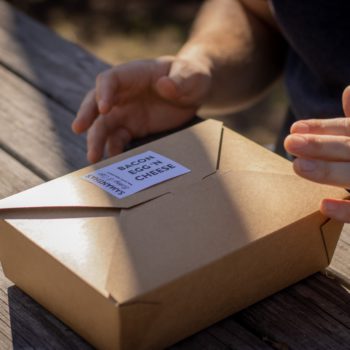|
|
Did you know that textile waste is a major environmental problem? Every year, millions of tons of clothing and other textiles end up in landfills, contributing to pollution and waste. However, by recycling our old clothes, we can help reduce this impact and give our recycling our old clothes. This guide will explore the importance of textile recycling and various methods and brands that promote sustainable fashion.
Importance of Textile Recycling
Waste production has surged globally in recent years, and it’s not slowing down. According to Statista, it’s projected that by 2050, the amount of solid waste generated by cities worldwide will have risen by about 70%, reaching a staggering 3.4 billion metric tons.
This uptick is linked to factors like more people, cities growing, economies expanding, and how we shop. With this huge amount of waste piling up, authorities must step up and offer effective ways to manage and eliminate it.
Thus, textile recycling is a crucial process that transforms old textiles into fresh products. This encompasses clothing, accessories, and even household items. The primary objective is to prevent these items from becoming landfill waste, instead offering innovative ways to grant them a second chance.
Examples:
- Upcycling Fashion Brands: Companies like “Reformation” and “Patagonia” repurpose old textiles to craft new clothing lines, reducing the demand for new resources and curbing waste.
- Fiber Recycling: Organizations such as “Circular Systems” employ advanced technology to break down old textiles into fibers, which can then be used to create new fabrics.
- Community Initiatives: Some communities have established textile recycling centers where people can donate used clothing and textiles, extending their lifecycle while supporting local initiatives.
The Environmental Impact of Textile Waste

The tangible and far-reaching environmental repercussions of textile waste mar the fashion industry. This sector’s adverse influence casts a shadow that stretches from the prodigal consumption of water and chemicals during production processes to the subsequent discarding of unwanted clothing items.
These actions collectively contribute to the alarming triad of pollution, greenhouse gas emissions, and the depletion of valuable resources. A collection of esteemed sources substantiates the gravity of this scenario.
The United Nations Environment Programme underscores the urgency of sustainable practices through its report on “Single-use plastics: A roadmap for sustainability,” offering insights into curbing wasteful consumption patterns and advocating for eco-friendly alternatives.
Likewise, the Ellen MacArthur Foundation presents a compelling perspective in its work “A New Textiles Economy: Redesigning Fashion’s Future,” urging a paradigm shift towards circular fashion systems that prioritize recycling and reusability.
The World Economic Forum, in “The Global Risks Report 2021,” acknowledges the imminent perils of unsustainable practices and their overarching implications on multiple fronts3.
The World Resources Institute also posits sustainable solutions to nourish the world’s growing population in its publication “Creating a Sustainable Food Future: A Menu of Solutions to Sustainably Feed More Than 9 Billion People by 2050.”
As a response to the multifaceted challenges of textile waste, textile recycling emerges as a beacon of hope. By reimagining discarded textiles as valuable resources, the fashion industry can realign its trajectory towards sustainability, thereby mitigating the potentially catastrophic ecological footprint.
Benefits of Textile Recycling

- Resource Conservation: Textile recycling plays a pivotal role in conserving valuable resources by decreasing the demand for new materials.
- Reduced Emissions: Recycling textiles helps lower greenhouse gas emissions and energy consumption associated with producing new fabrics.
- Circular Economy: Textile recycling supports the circular economy model by reintroducing recycled textiles into the production cycle, where materials are reused and waste is minimized.
- Job Creation: The textile recycling process generates employment opportunities in various stages, from collection to processing.
There are numerous benefits to recyclable textiles. It helps conserve resources by reducing the need for new materials. Additionally, it can help lower greenhouse gas emissions and energy consumption associated with producing new textiles. Lastly, textile recycling can create employment opportunities and contribute to the circular economy.
Tips in Recycling Old Clothes

1. Find a recycling program near you
One of the easiest ways to recycle your old clothes is to find a recycling program near you. Many cities and organizations offer curbside collection or drop-off locations specifically for textiles. Participating in these programs ensures that your old clothes are properly recycled instead of being thrown away.
2. Donate your old clothes
If your old clothes are still in good condition, consider donating them to a local charity or thrift store. These organizations often accept gently used clothing and resell them to support their causes. Not only does this promote reuse, but it also helps others in need.
3. Explore clothing take-back programs
Several brands and retailers have implemented clothing take-back programs to encourage recycling. For example, Patagonia has an official website where you can request a shipping label to send in your old clothes for recycling. These take-back programs are a convenient way to recycle your clothes, especially if you don’t have access to local recycling options.
Where to Drop Off Old Clothes for Recycling
1. Local recycling centers
There are designated collection points for textiles. These collection points may be located at recycling facilities or community centers. Contact your local waste management department or environmental organization to find out where these drop-off points are.
2. Clothing and textile recycling bins
In many communities, clothing and textile recycling bins are placed in convenient locations such as parking lots or shopping centers. These bins are specifically designed to collect textiles and make it easy for you to drop off your old clothes for recycling.
3. Companies that offer textile recycling
Aside from recycling programs and bins, some companies specialize in textile recycling. These companies use clothing brands, retailers, and individuals to recycle unwanted textiles. They collect the textiles and repurpose them into new products or materials.
What to Do with Clothes Not Suitable for Recycling

1. Repurpose old textiles
If your old clothes are no longer suitable for wearing or recycling, you can get creative and repurpose them. Consider turning old t-shirts into rags or cutting them up to make quilts or tote bags. There are numerous online tutorials and ideas for repurposing old textiles.
2. Create rags or cleaning clothes
Another option for old clothes that can’t be reused or recycled is to turn them into cleaning cloths or rags. These can be used for various household cleaning tasks, reducing the need for disposable wipes or paper towels.
3. Consider shoe or linen recycling
If you have old footwear that is beyond repair or worn out linens, you can explore specialized recycling options. Some companies and organizations accept old shoes for recycling, while others have programs specifically for linen recycling. These options ensure that even these items can be diverted from the landfill.
Ways to Encourage Textile Recycle in the Community
1. Raise awareness about textile waste
One of the first steps to encouraging textile recycling in your community is to raise awareness about the issue of textile waste. Educate others about the environmental impact of the fashion industry and the importance of recycling textiles. By spreading the word, you can inspire others to take action.
2. Support local thrift stores and charities
Supporting local thrift stores and charities that promote textile recycling is another way to make a difference. By shopping at these stores or donating your old clothes, you contribute to the circular economy and help fund their initiatives.
3. Advocate for recycling programs
If your community doesn’t have adequate textile recycling programs, you can take the initiative to advocate for their implementation. Contact local waste management authorities, government officials, or environmental organizations to express your support for expanding recycling options.
By recycling our old clothes and promoting textile recycling, we can help reduce the fashion industry’s environmental impact and move towards a more sustainable future. So, let’s take action today and make a positive change!
Frequently Asked Questions
Textile recycling is the process of reusing or repurposing old clothes and other fabric items instead of disposing of them in landfills. This helps to reduce waste and its impact on the environment.
There are several options for recycling old clothes. You can donate them to charity organizations, participate in a clothing recycling program, resell them through consignment or online platforms, or take advantage of take-back programs offered by certain brands.
Several companies offer clothing recycling programs, including popular brands such as H&M, Patagonia, Nike, Levi’s, and The North Face. These brands have established take-back programs to collect and recycle old clothes.
A take-back program is a service offered by certain brands where they accept their own products back from customers for recycling. Through these programs, the brands ensure that their clothes don’t end up in landfills and instead get recycled into new materials.
Yes, you can still recycle clothes that don’t fit or are damaged. Many textile recyclers are able to process clothes that cannot be resold or donated and turn them into secondary materials or recycled textiles.
To participate in a clothing recycling program, you can visit the brand’s retail stores or designated drop-off locations and deposit your old clothes in the collection bins provided. Some brands also offer mail-in options for recycling.
Once collected, the recycled clothes are sorted, cleaned, and processed by textile recyclers. Their condition may turn them into new garments, packaging materials, carpet padding, or other textile products.
Textile recycling is important because it helps to conserve resources, reduce waste, and minimize the environmental impact of the fashion industry. It also supports a more circular and sustainable supply chain for clothing and textiles.
Yes, there are recycling programs specifically for shoes. Some shoe brands, like Nike and Adidas, have initiatives to collect and recycle old shoes. These programs help to prevent shoes from ending up in landfills and promote the reuse of materials.
You can find textile recyclers in your area by contacting local recycling centers, checking with your city or state’s Department of Environmental Protection, or searching online directories specializing in recycling services.
Conclusion
As we strive for a greener and more thoughtful approach to fashion, the guide to recycling old clothes becomes a powerful symbol of positive change. It shows us how to make a difference by exploring brands that care and learning effective ways to recycle textiles.
We’re leaving behind the era of throwing things away and embracing circular fashion. This guide shows us how recycling old clothes can be a big help. It introduces good brands for the Earth and teaches us practical ways to give old clothes new life.
In a nutshell, this guide encourages us to take action and inspires us. We move towards a more sustainable fashion world each time we recycle old clothes. By supporting the brands and methods in this guide, we’re joining a journey that combines style with responsibility and fashion with caring for our planet. It’s about improving the present and creating a future where every choice matters.












